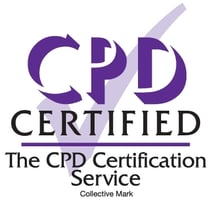Financial crime training package – Online courses for staff
Financial crime risks, such as money laundering, fraud, terrorist financing, and sanctions violations, can affect businesses at any time. Our financial crime and anti-money laundering (AML) compliance training prepares your team to spot potential threats, understand their role in preventing financial crime, and adhere to vital regulations to maintain a strong compliance culture.

Build a resilient business with financial crime compliance training
92%
It’s been identified that 92% of regulated firms risk financial crime due to a lack of daily monitoring.*
$3.1 trillion
The estimated costs of illicit funds that flowed through the global financial system, including activities such as money laundering and terrorist financing.**
**Nasdaq
£571.7 million
The amount UK business lost to fraud in the first half of 2024 alone.***
***UK Finance

Prepare your team to tackle financial crime
Upskill your team with our adaptable training solutions, empowering your employees to protect your business against financial crime.
Choose from our comprehensive, off-the-shelf financial crime compliance courses or customised training plans to suit your needs. Our training packages cover key areas such as AML compliance, customer due diligence, and understanding sanctions to ensure you meet evolving regulatory standards in various formats. Need a tailored solution to meet your company’s specific needs? Our bespoke course options could be the perfect fit.
About our learning styles
In-depth
These are our more detailed e-learning courses that include practice scenarios and typically last between 25 and 45 minutes.
Refresher
These targeted courses help reinforce your employees' knowledge and notify them of any updates they might not be aware of. These typically last between 15 and 20 minutes.
Express
Our focused training courses deliver employee learning in smaller chunks, typically lasting between 10 and 15 minutes.
Microlearning
These bite-sized animated training videos can be delivered as: standalone, embedded in detailed e-learning courses, or compiled into a learning path.

It’s been a very positive experience for me. The videos make training easier to follow, it’s much quicker to learn, and it takes up less of my time. So well done on this new format — it gets a thumbs up from me!
Learner
NORD/LB

Anti-Money Laundering and Counter-Terrorist Financing
To prevent criminal activity, nearly all countries in the world have committed themselves to extremely tough laws against money laundering and terrorist financing.
Read more
Anti-Money Laundering [Financial services version]
To prevent the proceeds of crime from finding their way into the formal economy, most countries have extremely tough laws with severe penalties.
Financial Sanctions
Financial and economic sanctions are binding prohibitions applied by governments to prevent business transactions with certain designated persons.
Read more
Financial Crime Prevention
There are two kinds of financial crime.
Read more
Suspicious Activity Reporting
It is your employees' legal duty to report any knowledge or suspicion of financial crime.

Economic Sanctions
Violation of sanctions issued by the UN, the US and the EU which place restrictions on payments and other financial transactions can result in fines as well as criminal charges.
Embargoes and Sanctions
Embargoes and sanctions prohibit all transactions with an entity, trading of certain commodities, or supplying critical goods.
Read more
Customer Due Diligence
Customer Due diligence is a legal requirement and plays a vital role in protecting your Company.
Tipping Off
Tipping off a person about a money laundering or terrorist financing investigation is a criminal offence.
Understanding Sanctions
Sanctions restrict business dealings with specific individuals organisations or countries to support global peace, human rights and crime prevention.
Money Laundering Red Flags
Detecting and reporting money laundering red flags is essential for maintaining anti-money laundering (AML) compliance.
Counter Terrorist Financing
Terrorism is a huge risk that we face in the world today and like other human activities, it requires funding.
Counter-Proliferation Financing
UK companies are required to tackle proliferation financing as part of their anti-money laundering and sanctions checks.
Third-Party Due Diligence
Due diligence plays a vital role in protecting your Company.
MCOB - General Standards
The Mortgage Conduct of Business (MCOB) for General Standards applies to all firms that deal with home finance.
Read more
Ethical Standards in Finance and Investment
The FCA's ethical standards apply to individuals in finance and investment.
Read more
BCOBS - General Standards
The FCA Banking Conduct of Business Sourcebook (BCOBS) applies to all firms that accept deposits from banking customers in the UK.
Read more
Training and Competence
Training and Competence (T&C) forms an important part of UK regulations under the FCA.
Read more
The Three Stages of Money Laundering
Money laundering is the process criminals use to disguise illicit funds as legitimate income through placement, layering and integration.
Preventing Tipping Off
Tipping off is a criminal offence that occurs when someone under investigation for financial crime is made aware of the suspicion against them.
COBS - Client Categorisation
The Conduct of Business Sourcebook (COBS) applies to financial firms in the UK that deal with client investments.
Read more
Payment Services Regulations
The Payment Services Regulations (PSRs) 2017 was introduced in 2018 and set the Payment Services Directive 2 (PSD2) in motion.
Read more
Whistleblowing for Managers (FS)
Whistleblowing refers to disclosing corrupt, illegal or fraudulent activities committed by organisations.
Read more
Appropriate Use of Communication Channels
Not all communication channels are appropriate for business purposes.
Read more
Markets in Financial Instruments Directive II (MiFID II)
The Markets in Financial Instruments Directive (MiFID) originally aimed to increase competition and integration in markets for financial instruments.
Read more
COBS - Dealing and Managing
The FCA Conduct of Business Sourcebook (COBS) applies to financial firms in the UK.
Read more
Information Barriers
The flow of information in financial firms needs monitoring between businesses involved with private and public side activities.
Read more
Senior Management Arrangements Systems and Controls
The Senior Management Arrangements Systems and Controls (SYSC) Sourcebook apply to authorised financial services firms.
Read more

Conduct Rules for Senior Managers at Dual Regulated Firms
Under the Senior Managers Regime, all senior managers must comply with the FCA's six Individual Conduct Rules (ICRs) and four Senior Managers Rules (SMRs).
Read more
MCOB - APRC, Shortfalls and Charges
The Mortgage Conduct of Business (MCOB) for the Annual Percentage Rate of Charge (APRC), shortfalls, and charges apply to home finance businesses.
Read more
FSCS Deposit Protection
The Financial Services Compensation Scheme (FSCS) safeguards customers' finances.
Read more
Complaints Handling for Managers
One of the three operational objections of the FCA is to protect consumers.
Read more
Financial Crime Prevention (Commercial Insurance)
There are two kinds of financial crime.
Read more
Terrorist Financing Red Flags
Terrorist groups use legal and illegal methods to raise and move funds, often exploiting financial systems to conceal their activities.
Understanding Terrorist Financing
Terrorist groups rely on financial support from various sources, both intentional and unintentional.
Customer Due Diligence
Bring "Customer Due Diligence" training to life using animation characters and storylines.
Enhanced Customer Due Diligence
Bring "Enhanced Customer Due Diligence" training to life using animation characters and storylines.
Politically Exposed Persons
Politically exposed persons present a high risk of money laundering due to their influence and access to state resources.
Suspicious Activity Reporting
Employees must report any knowledge or suspicion of money laundering or terrorist financing to the Money Laundering Reporting Officer.
Unexplained Wealth Orders
Unexplained wealth orders allow law enforcement to seize assets if their owners cannot justify their wealth as coming from a legitimate source.
Money Laundering and Terrorist Financing Risks of Virtual Assets
Unlike fiat currency, virtual assets are not managed by any bank or government, leaving them vulnerable to several unique risks concerning money laundering and terrorist financing.

Anti-Money Laundering and Counter Terrorist Financing
Most countries have extremely tough AML laws with severe penalties.
Embargoes and Sanctions
Embargoes and sanctions prohibit transactions with an entity, trade in a commodity or the supply of goods.

Market Abuse Regulation
Market Abuse Regulations prohibit insider dealing, unlawful disclosure of inside information and market manipulation.

Your central portal for streamlining compliance
The Skillcast Portal offers Standard, Enhanced, and Premium plans to streamline training across your business. You can also enhance your e-learning experience with our all-in-one Learning Management System — or use your own. Benefit from ready-made courses or tailor existing solutions to fit your specific requirements.

Strengthening leading German bank NORD/LB with bite-sized compliance training
Common questions on financial crime compliance training
Financial Crime
Common FAQs
How can I log and track incidents of financial crime in my organisation?
How can I ensure my employees understand and comply with our internal policies in relation to financial crime?
.
Can small businesses be held accountable under competition law?
Are informal conversations with competitors risky?
What are the consequences of breaking competition law?
How can companies prevent anti-competitive behaviour?
Does the Criminal Finances Act 2017 apply to non-UK companies?
What industries are most at risk under the Criminal Finances Act?
How often should businesses review their tax evasion prevention procedures?
Can small businesses be prosecuted under the Criminal Finances Act 2017?
What industries are most vulnerable to proliferation financing risks?
How can small businesses ensure compliance with proliferation financing regulations?
Are there international standards for combating proliferation financing?
What are “dual-use goods” and why are they significant?
How often should proliferation financing risk assessments be updated?
What is an anti-money laundering check?
What is anti-money laundering compliance?
Are Skillcast courses SCORM-compliant?
What other tools are needed beyond training?
Is our training content still compliant with the latest legislation?
- You can check the latest course content updates in our library updates page: https://www.skillcast.com/compliance-course-library-updates
- For major legislative changes, we:
- Send you email alerts to ensure you are notified
- Offer you a free trial of newly created or updated content
- Host webinars with compliance experts to explain the changes and how our training supports your ongoing compliance
Can you translate our content into other languages?
What file types are supported by the Skillcast system?
Features |
Supported file types and details |
|
File Exchange |
File types: PDF, Excel spreadsheets, Word documents, SCORM and xAPI files, and compressed zip files. Max file size: Default is 1GB, can be increased to a max of 2GB |
|
SCORM files |
Versions: SCORM 1.2, SCORM 1.2 for Moodle, SCORM 2004 2nd, 3rd and 4th Edition. Max file size: 1024MB |
|
xAPI file |
Max file size: 2GB |
|
Videos |
File types: MP4 or MOV. Videos must be optimised, with a max file size of 100MB. If the file is bigger, our Design Team can help |
|
Images |
File types: jpg, png and gif. The file size should ideally be 100KB, but it can be up to 250KB |
|
CPD evidence |
File types: Word, PDF, Excel and CSV. File size: the limit should be whatever the portal config option is set to. Servers are set to max 2GB |
|
Policy documents |
PDF or Word File size: the limit should be whatever the portal config option is set to. Servers are set to max 2GB |
|
Offline activities evidence |
File types: PDF, DOC, DOCX, XLS, XLSX, CSV, PNG, GIF, JPEG, JPG, PPTX and MSG. File size: the limit should be whatever the portal config option is set to. Servers are set to max 2GB |
|
Client logo files |
File types provided by client: EPS, PDF, AI and SVG |
|
Registers |
PDF, DOC, DOCX, XLS, XLSX, CSV, PPT, PPTX, POT, PPA, PPS, JPG, JPEG, PJEPG, PNG, BMP, GIF, MP4, MOV, WMV, CPTX, CP, TXT, ZIP and MSG files |
|
Declarations |
JPG, JPEG, PNG, GIF, XLS and XLSX files |